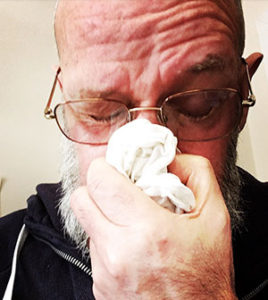
As we start moving into fall and winter, Americans are certain to be facing a continuation of COVID-19, the disease caused by the virus SARS-CoV-2 and the possibility of a widespread outbreak of the flu – a potential crisis that has a new name: “twindemic,” according to the Poynter Institute.
Even a mild flu season could overwhelm already-stressed hospitals treating COVID-19 patients. On average, 39 million to 56 million Americans are infected by the flu annually, and about half a million of them become so sick they require hospitalization, according to the U.S. Centers for Disease Control and Prevention.
“Now is … the time we have to truly start looking toward an impending season when hospitals are overwhelmed — respiratory virus season (‘flu season’),” wrote Saskia Popescu, Ph.D., M.P.H., adjunct professor of public health, epidemiology and biostatistics at the University of Arizona Mel & Enid Zuckerman College of Public Health, in Infection Control Today.
The CDC is urging everyone to get vaccinated for the flu this year, to lessen the potential burden on hospitals, but this year’s effort has been thrown into disarray because Americans are staying away from their doctor’s offices, drug stores, schools and offices, where shots are usually available, according to Bloomberg news.
The effort is further complicated by the fact that Americans are already skeptical of flu vaccinations, in part because its effectiveness fluctuates. In addition, there are pockets of the population that are skeptical of all vaccinations. Each year, only about half of the U.S. population usually gets a flu shot.
This year, public health officials see the roll out of the flu vaccination effort as a kind of dry run for the potential of a COVID-19 vaccination campaign. Cities are investing in sending public health staff into communities, schools and workplaces that are open to provide flu shots and set the stage for inoculating all Americans, when and if a COVID-19 vaccine is widely available.
Whether there will be a COVID-19 vaccine is uncertain. While National Institute of Allergy and Infectious Disease director Anthony Fauci, M.D., remains ‘cautiously optimistic’ there will be a vaccine available by early 2021 for high-risk populations, it is not clear when it would be widely available.
Further, with the politicization of the pandemic response, there are questions about whether Americans will be afraid to trust the safety of all vaccines, including one for COVID-19.
“Everything that politicians have touched so far in this pandemic has been compromised by their involvement in it,” Amesh Adalja, M.D., an infectious disease expert at the Johns Hopkins Center for Health Security, told the Hill.
Meanwhile, it is possible that this year’s flu season won’t be the crisis that many are worried about, because of the social distancing and mask wearing implemented for COVID-19. Scientists have been watching the flu season in the southern hemisphere, where winter is ending, and countries are reporting that the flu season has been mild.
To understand more about covering the flu, see our annual guide to covering the flu, which includes resources to help in your reporting.
And if you are looking to cover flu season this year, here are a few questions:
- What are public health organizations in your area doing to get ready for the flu?
- What are they doing to counter vaccine misinformation?
- How are they preparing for the roll out of a COVID-19?
- Does your public health department have the funding to support vaccine efforts?
And please don’t hesitate to reach out to me if you need help finding resources for this flu season. Find me at bara@healthjournalism.org.






